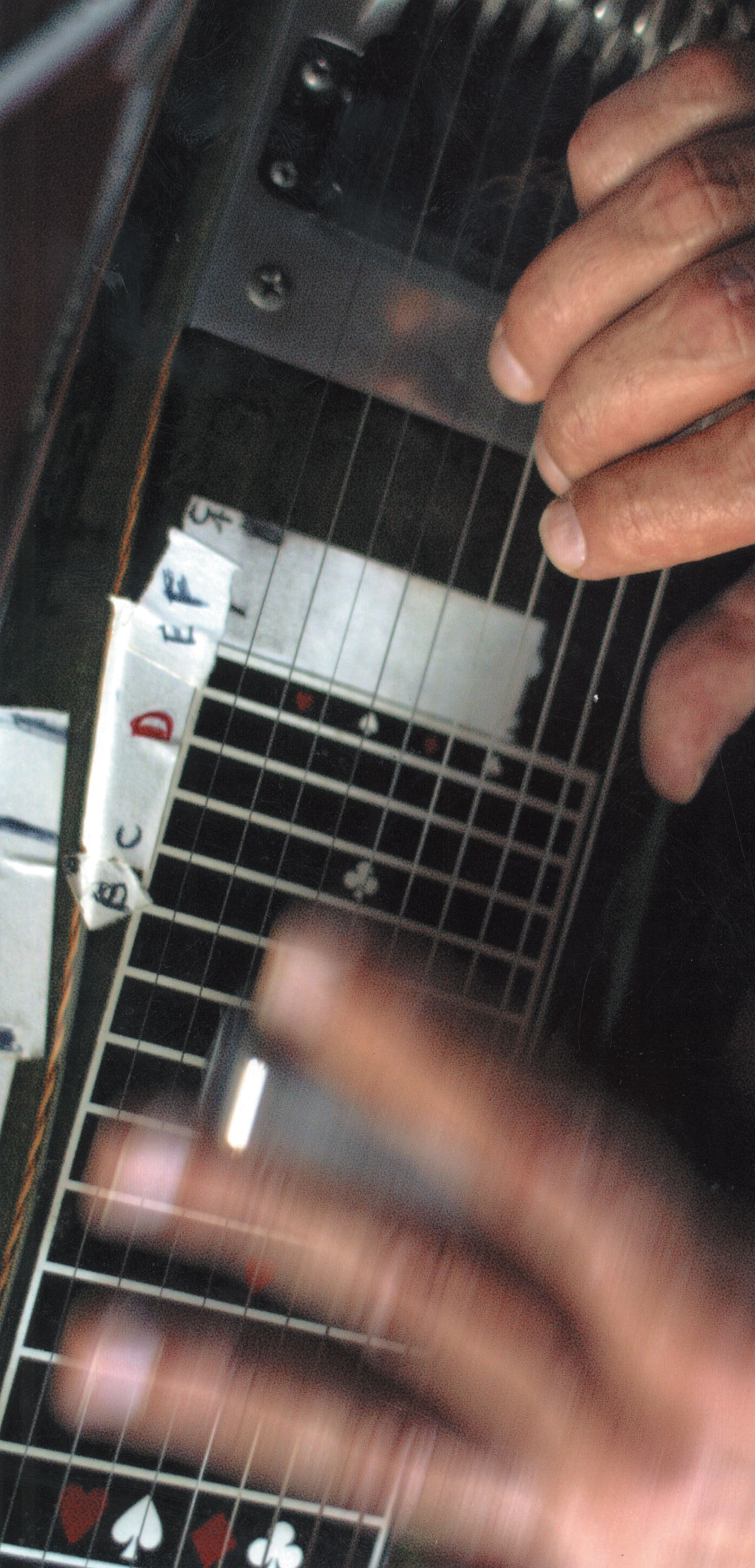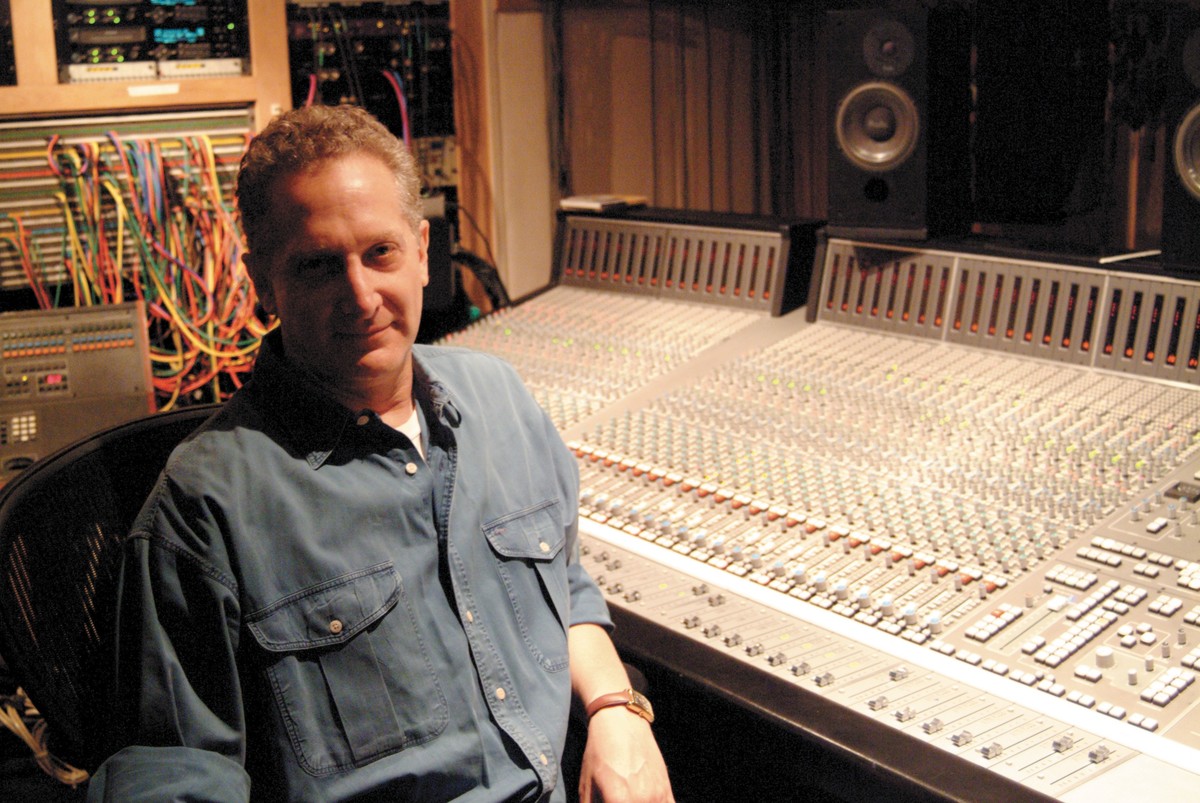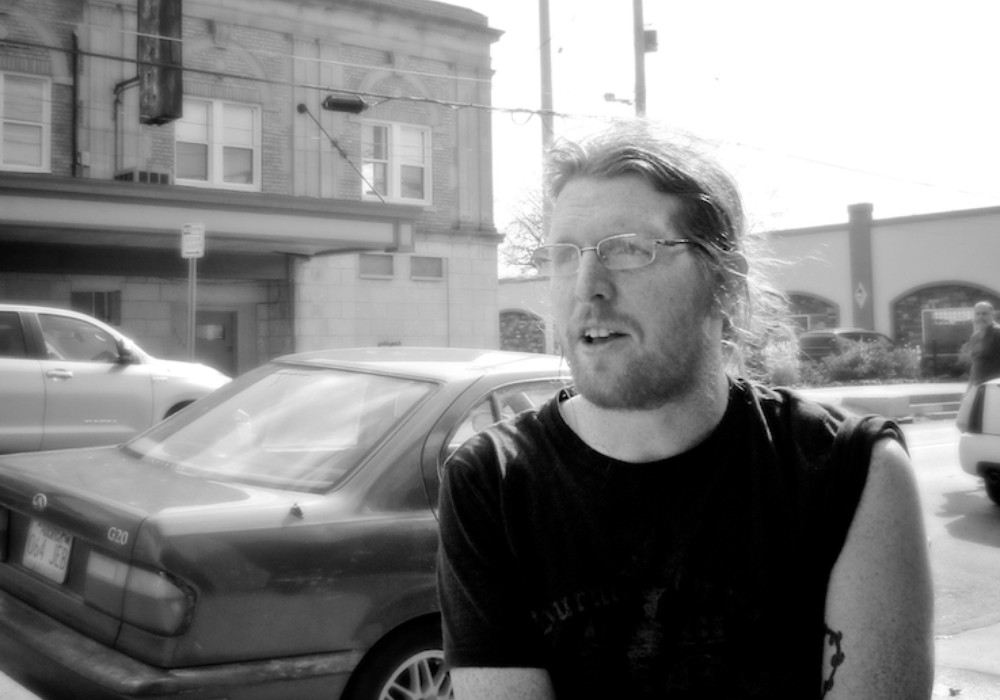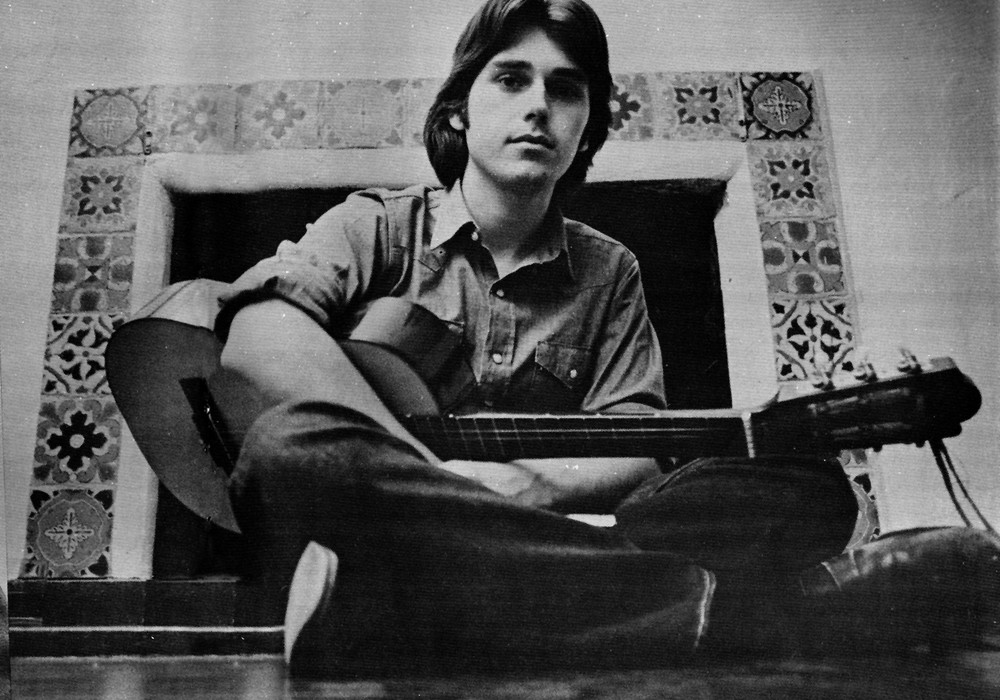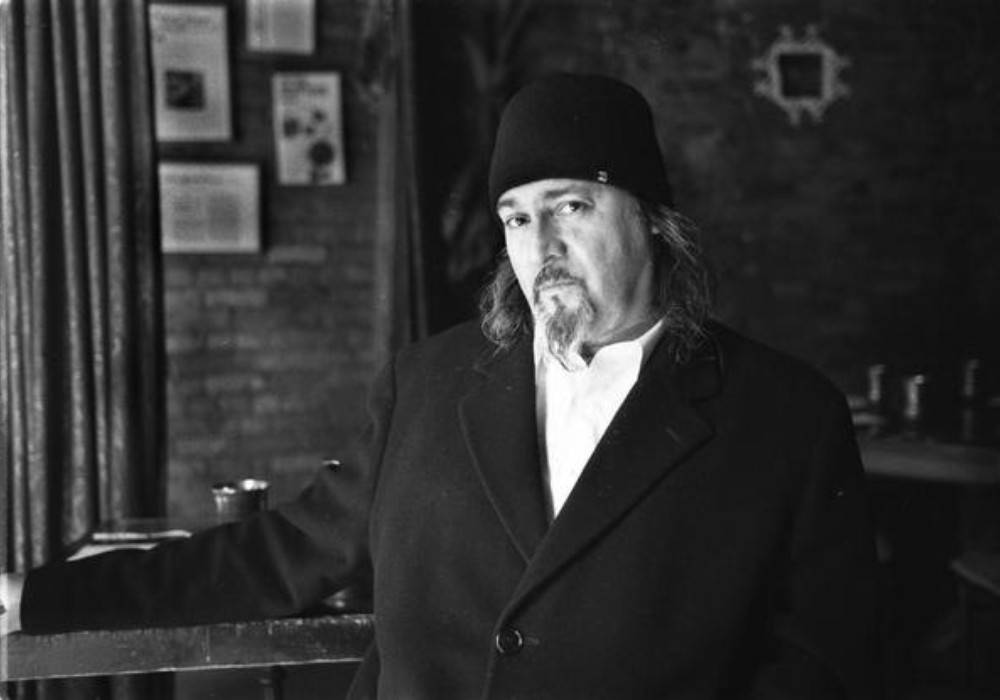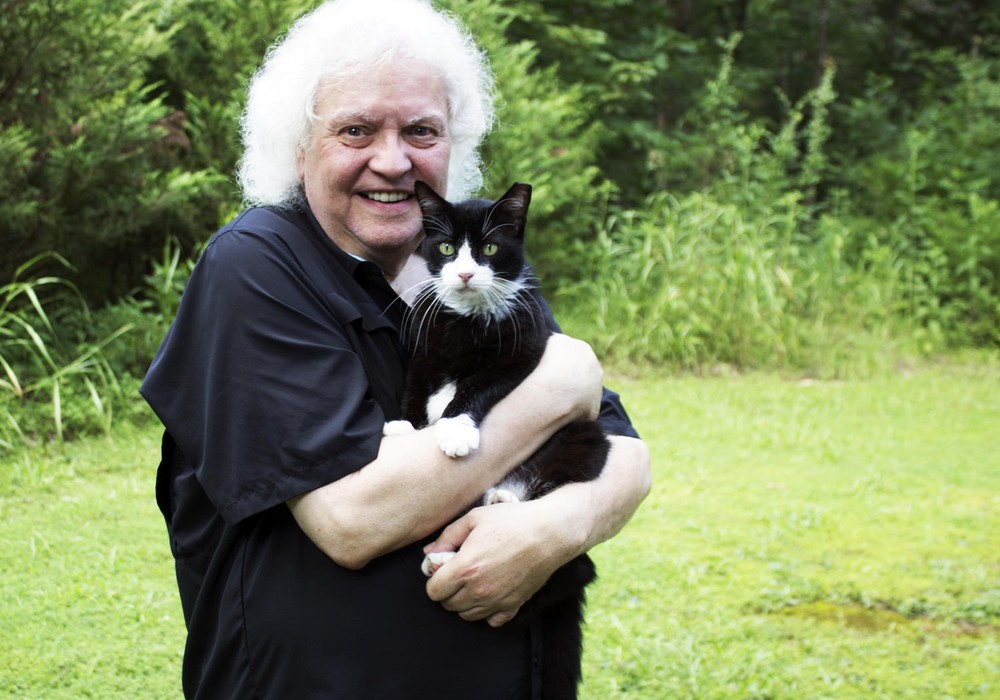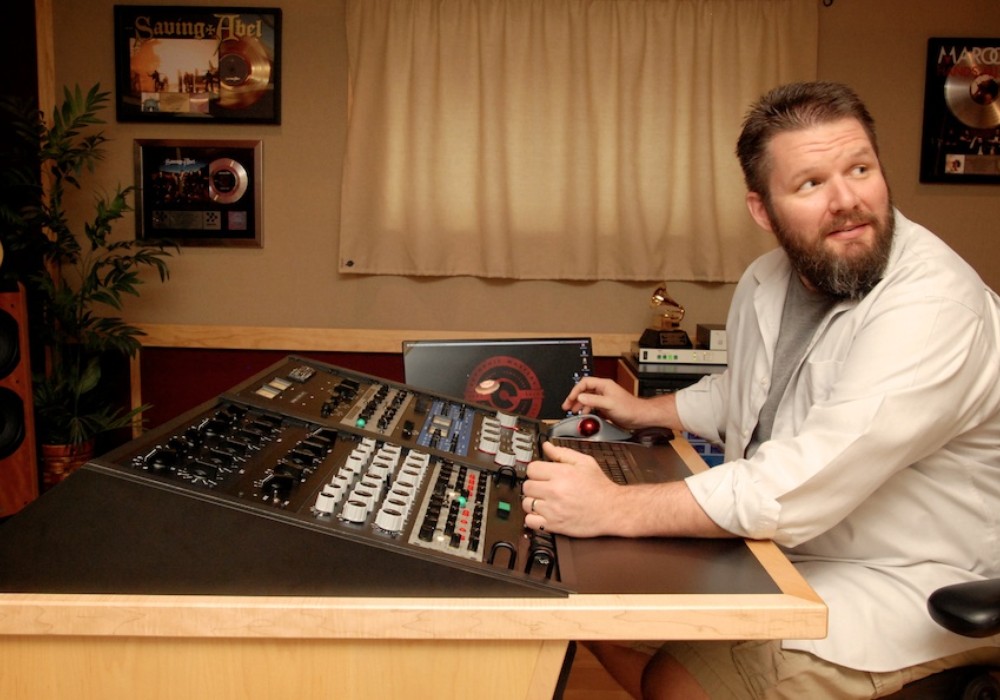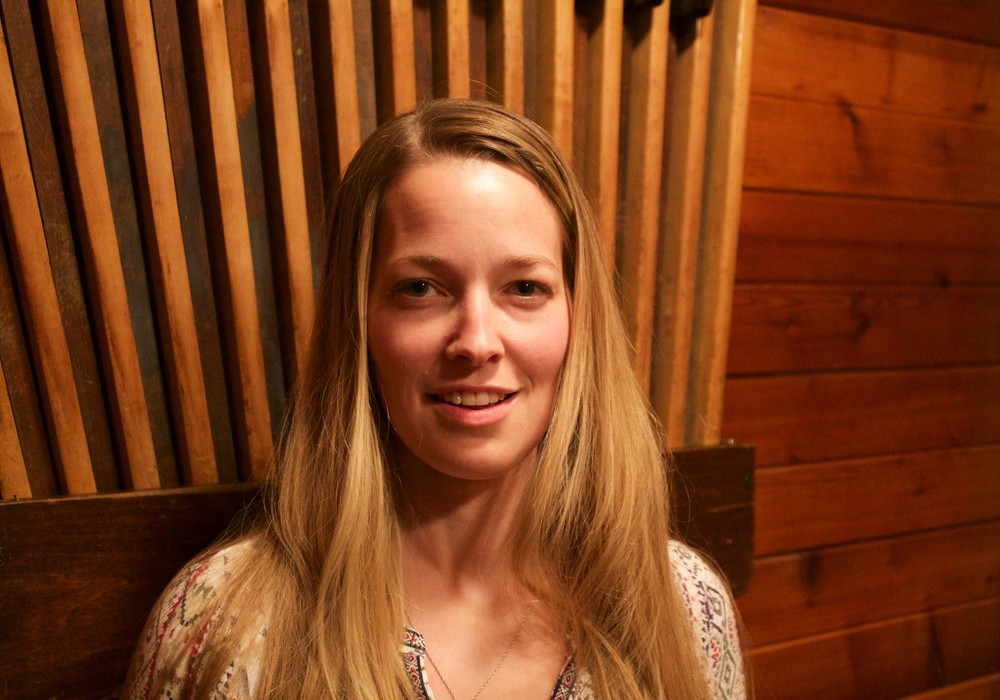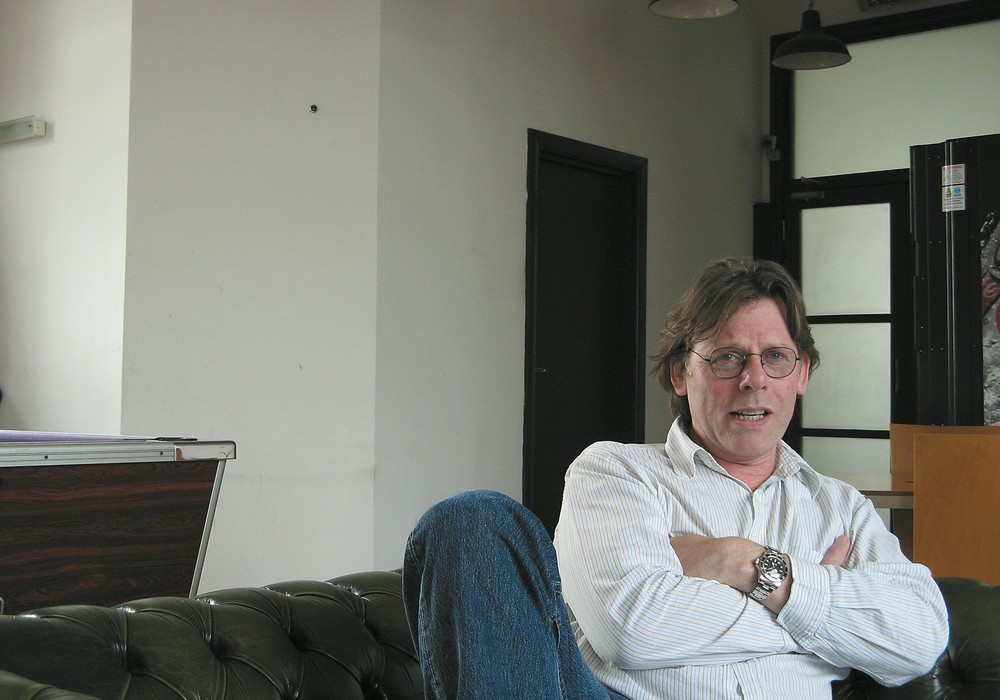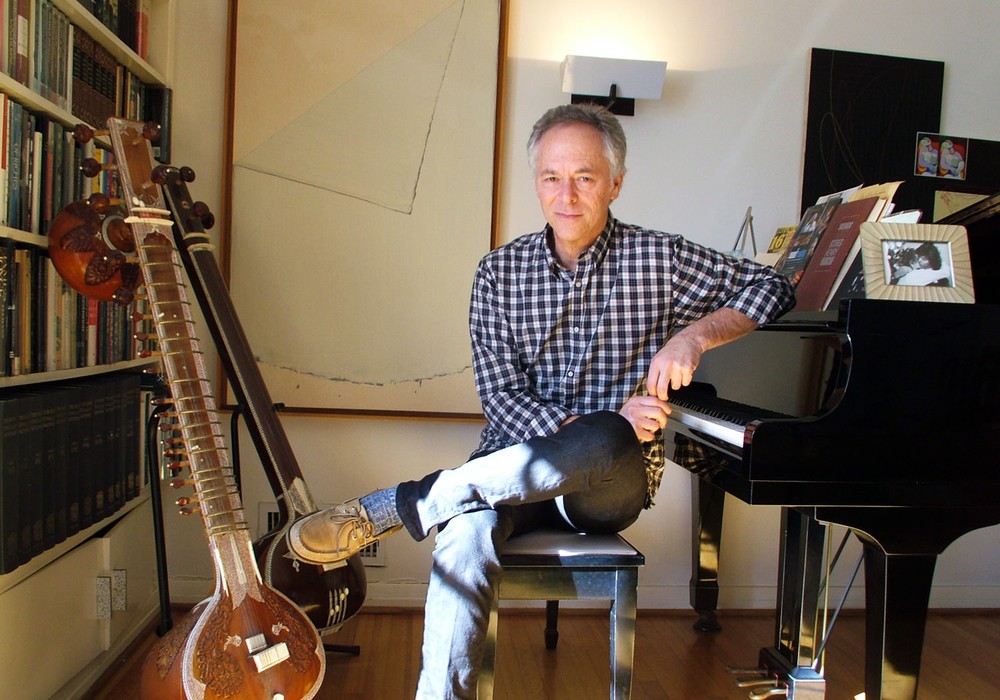Michael Brauer is the person who introduced me to subgroup compression. I had recorded a track with David Poe and, since Michael had already mixed the rest of the album, he offered to mix this track. Michael's explanation of his multi-bus compression approach got me started experimenting with compression subgroups. It took me a year to get to the point where I understood it well enough to realize that I needed to sit down with him and really learn what he had introduced me to. Our five-hour conversation filled in some important gaps on learning how to use a compressor and introduced me to using compressors in ways that I had never considered. I was also surprised when Michael told me that it took him two to three years to learn the sound of compression when he first started as an engineer. This is a mix engineer who is regarded by both peers and artists as a master of the use of compressors. I had also planned to grill him on the details of which compressor he likes on the inserts of every possible instrument. The answer I got was far more interesting than, "It varies." I think I am similar to most Tape Op readers in that, because of inexpensive recording equipment, I was able buy my own gear and teach myself engineering. Not only has digital recording possibly killed good sound and good music, but it has also killed the apprenticeship. Concepts like the ones discussed here are only passed from one person to another. This is almost impossible to learn on your own. The interview was a real lesson for me, and the closest I will ever come to an apprenticeship. I hope it will function as the same for you. Michael Brauer has been mixing for nearly 25 years. He's mixed many albums that I'm sure you've heard including Coldplay's Parachutes, the Rolling Stones'
Are you always using compression when you mix? Where are you using it?
Well, I'm using compressors, but I'm not always using compression. I use compressors a lot more as a form of tone than waiting for it to slam. Because of that, I have different chains where I use compression. I divide up my mix into combinations of four sub- groups, with a fifth uncompressed. The SSL 9000 gives me the ability to do that.
That's with the A, B, C and D stereo busses?
Yes. It has those four dedicated stereo busses and it has the master stereo bus. All four busses are processed differently. I use B for my bottom end, A for the top end of the record and I'll use C for the center of the record. Like guitars. Bus A goes to my Neve 33609 and then goes to a couple of Pultec EQs. They've both been modified and they sound fantastic. This is an early 33609, but it had the cards changed in it, so it's really warm. My Distressors and Avalon EQs are across the B bus for drums and bass. C went to a JoeMeek 1.05 until recently. It was a model that John Travis turned me onto. He said they're great on guitars and there's no other model of the JoeMeek that he liked as much as this. So I got it and I really liked across the guitar bus. Then I started playing around with the Pendulum compressors, the ES-8 and the 8610. The 8610 has a Fairchild tube with kind of darker sound. The ES-8 has a different tube which is a little bit more vibrant, brighter. I mixed a record using the Joe Meek [Tape Op #100] and when I was done with the mix, I set up the two Pendulum compressors identically to the way I set up my JoeMeek. I did three mix passes onto my Tascam hard drive [MX2424] with each setup. I brought them up and listened without knowing which was which and the one that just stood out, jumped out, was the ES-8. It's what had been in my head. I'd been wanting a certain sound, different than what the JoeMeek was offering me. So that's how things change for me. I usually stay very consistent with what A, B, C and D is going to be. D goes to a pair of Vac Rac, custom-made limiters and it's for when I want that extra warmth. What gets sent to D can be any combination of the first three busses, or sometimes I just send a track to it alone. If I want to warm up some strings for example, I would send it to D. Or I may send the vocals to both A and D. If it's giving me a better tone, then I'm going to send it to that.
Is your setup the same for every mix?
Always exactly the same initial setup.
Which is the one bus with nothing on it?
That's the stereo.
So you choose to send something to any of the A, B, C and D busses or to the stereo bus.
Yeah. Or, I can choose A, B, C, D and the stereo, if I want. You can use any combination.
What type of compression settings are you usually using? You said you don't always have a lot of compression going on. Is that from high thresholds or low ratios?
Each one is different. Each one I've chosen something I like. It depends on the record. If I want the bottom end to be really snappy and have almost that 1176 sound, I'll put the mod in on the Distressors. With the mod I leave it at 6:1. I look at everything all the time to see how hard it's working. If anything is working really hard, it might be the Distressor. But it's happening so fast, it's working hard on the transients, it's not staying on. The Pendulum is on its first preset which are based on the 670 stereo Fairchild presets. It opens up the image and when the guitars come through there, they're just more vibrant.
Is there a return level control for the A, B, C, D bus?
Yes, but I line up everything using 1 k, 100 and 10 kHz.
So that the levels come back even?
I'll start off with zero on the stereo. Then I'll take it out of the stereo bus and I'll go to A and A will probably read around +1 on 1 kHz. Then, I look at 100 Hz. If I don't have the Pultec in the path, it reads zero with no compression going on. Then I choose 100 Hz on the Pultec and I'll move it up until it's reading about 1 or 1-1/2.
Is the Pultec before or after the Neve?
Everything is post-compression. Then I switch to 10 kHz with my Pultec set on 8 kHz and I'll boost that about a dB and a half. Or, if the record's already really bright, then I'll turn that way down. It depends on what I'm getting. Generally that works, because it's so smooth. It's really based on the frequencies, more than the overall volume. On the Distressors, I do the same thing, except now I dig in a little bit deeper. I play around with a 3 kHz tone. Then 10 k, 12 k, 100 Hz and 50 Hz. I'm creating a different picture and setting it up with the frequencies from the SSL oscillator. I'm looking for certain peaks within the drums and the overall bottom end of the record. It's kind of a preset and once I put the drums through it, I tend to like it.
Do you end up getting level changes if you run something through more than one bus?
Yeah, it's twice as much. But understand, I don't double-bus it later.
What do you mean by double-bus it?
Well, if I'm going to bus B and bus D, I'm double- bussing, so you've got twice as much level. I'll make that decision before I bring the fader up. If I want the sound of these two busses and I'll bring up the fader with that sound already incorporated. Then there are times when the mix is really, really jamming and it feels great, but the bass drum or the snare just doesn't have enough pop to it. Bringing it up isn't really going to be the answer, because I've got the compressors working just the way I like it If I start adding more, I'm not going to get the punch, because I'm causing the compressor to work harder. If I back off the compression, then it's going to affect the other things that it really sounds good on. That's when I'll assign that track to the stereo bus. Now I have compression going on with no compression. And it's free. The frequencies are just coming out naturally and you get this combination of the two. If it's too loud, then I bring that fader down a little bit.
Are you saying that when you assign stuff to the A, B, C and D bus, they start out only going just to those buses and not to the stereo buss?
That's right.
So the stereo's just as much of a choice as any of those busses.
But I save it for later in the day, because I don't want to back myself up against a wall. This is my out [from too much compression].
That's a great solution.
I started this when the SSL 6000 first came out. I'd been mixing the Aretha Franklin Freeway to Love record, and the producer was going, "I want more bottom end, I want more bottom end." The more I tried to put out, the more it hit the compressors and the more it squashed the vocal. I was backed up against the wall. For years it was fine, because there wasn't that kind of huge bottom or top end that was needed. Once the bottom end started getting more important, I found that I was being backed up against the wall with nowhere to go. More level was no answer. I started thinking about it how to change it. The 6000 had an A, B and C bus for film. I decided to spread some stuff across A and B, and C can be my out. So I came up with this thing where I would send A and B to C. Across the C insert was the Vitalizer. I had that and would leave it off until I had the mix feeling great. That's when I would bring this into the mix and it would pop the midrange out. It was just amazing the things it would do to the record. It didn't hurt the ear, just tickled the ear. I did that for years with the Toad the Wet Sprocket and Fishbone records. But, once again, I had other ideas of things I really wanted to do. Eventually I went to Sony and they had the SSL 8000. That was the early four-bus concept. It had its limitations and it was kind of a lemon, but for me it was perfect. Again, it was a post-production or film console and nobody was using it this way. I really wanted every part of this record to pump on its own. The whole point of this is to compress on its own and not affect other things that are going on. Like the drums. I don't want the drums to affect how the guitars work in the middle of the record or how the vocals work. I don't want to add a little bit more EQ to the bass and affect the overall compression. All this is meant to be how it shapes it, not how badly I can level it out.
So the A, B, C, D busses are like their own master sections with their own sound.
That's right.
So you know if you send something to one bus it's going to give you one sound and if you send to another it will give you a different sound. And, you've preset this all with choices to highlight the bottom, the middle and the top.
And, along the way, I have a lot of returns of different compressors. Let's take the bass — I can send the bass to B. But I can also send it to a compressor. I'll start with the EAR on the bass and then I've that going to an equalizer. So I'm already controlling it so that some notes don't jump out. Then I'll send it to B along with the drums. Now it gets molded into a whole bass and drums thing. Then if I want more power coming out of it and I don't want it to affect the compression of the drums, I have a Federal compressor I'll send it to. So now, I have my volume, my tone and my sound just by sending it to another compressor and that compressor is just slamming. But I'm not slamming the sound, I'm sending it to a slamming compressor.
Do you bring that back on its own channel?
Yeah, the return is on its own channel and that's going to the stereo.
Are you routing it through a regular bus like you bus a track to tape?
Yes. Busses 1-24 are assigned to compressors and I have 25 -48 routed to effects. Everything is already set up so that when I walk in, I don't have to do any additional patching.
Do the guitars ever go to B or is that limited to drums and bass? What if they need to be heavier in the low end?
They might if I want to see what it sounds like. But generally not.
What about vocals?
Vocals are a completely different animal. They don't pay attention to A, B, C or D.
What about things like pianos and keyboards? Where do they go in the subgroups?
They either go to A or D or A and D. That's my starting point. If I don't like what I hear I'll try something different.
What about channel compression or inserts? Do you tend to compress every instrument?
I'll put equalizers across the drums. If I'm mixing off Pro Tools, I may put the cymbals into the FATSO as a starting point, because that tends to smooth Pro Tools-recorded cymbals.
Right.
Bass is going to go through something, but it depends what was done to the bass before it got to me. Guitars these days are so compressed that what's the point of doing any more compression? It doesn't do anything. If anything I'll put equalizers across them. It just depends on what state and what kind of guitar sounds am I starting with.
How do you make those decisions? That's got to be one of the earliest things you do.
Yeah, that decision is based on my putting the track up and listening to what kind of rock guitar it is or — again, it just depends, are they rock guitars or are they clean electric guitars and how do they sit in the track, when I just put them up?
So you're going to throw up all the faders first and immediately start with compression decisions?
I'm going to put up the track and see what needs to be done. I don't want to put anything across it for the sake of putting it across. A lot of the stuff I get just needs help on distinguishing the sounds from one to the other. The engineering simply isn't what it was years ago. Some things they're better at and other things, they're not quite as consistent at. A lot of projects that come to me are not fitting well together sonically.
What situations do you find yourself looking for an insert compressor on a kick drum for instance? What are you likely to want to use and how?
I don't. I'll never put a compressor across an insert. If I use a compressor across a bass drum or a snare I do that by returning them to two separate channels.
Why?
I don't need to. The only thing I want to put across it is EQ for how I want to tone it out. Then what I do is I'll take the bass drum and the snare and I'll bring those up on two channels and I'll put those across some really vicious compressors that are actually doing something entirely different. They're not compressing, they're changing the whole tone of it. They're making it suck more or they're making the whole bottom end — something totally different than what the original sounds are. Then I just add to the original. So if I want more snap or more certain midrange, I slowly add it to the original snare. If I have to work more from there, I may bring in some of my samples.
When you bring in that return on its own fader, will that go to the B bus?
Not necessarily. I may just send that to the stereo.
What about stereo mix compression?
I try to leave that alone. I've already been doing the internal stuff. What I might do is an Avalon 747. If I'm working on Pro Tools stuff, I'll try to introduce certain warmth back into it. There are certain things about the signature of Pro Tools that no matter what you did, or who the engineer is, keep coming back and you hear that. There's a button on the 747, the tube button. What it does is add this certain tone to the lower midrange that is fantastic, and it has a graphic equalizer at the end. What I might do when I'm done mixing, when I feel like everything is great, is pop this into it and see if I can make it sound better.
So even though it's a compressor, you won't necessarily run it through the compression.
There is no compression going on.
But the compressor's in?
If the blue light turns on — yes, because it has to to go through that tube. But the blue light will only light up occasionally. You'll barely see the meter going. Then I'll play with the overall EQ to see if it sounds better and, if it doesn't, I'll leave it off.
How do you avoid gain reduction with the compressor on? Do you set the ratio low or the threshold really high? Or a combination of both?
I'll leave it at 3:1 or something like that and I'll just set the thresholds.
So it just barely touches.
Yeah. Then once you have that, it generally just pumps the level up. It's a great sound for many records. Over the years, you develop starting points that really help you, because you've learned your compressors, you've learned your equalizers and you know after hundreds of hours of being in these different situations that you can figure out how to get it done. In my mind there's just simply no, "I can't do this." I rarely say that and I'm disgusted when I have to give up, because if I can't figure it out, I know five other guys that I'm sure can. To me, they're all outside sitting on the couch waiting to walk in.
What advice do you have for people trying to learn the sounds compression?
You know, at Media Sound, which is where I learned, I couldn't hear compression for the first two or three years. The engineer would say, "Okay, put in the LA-3A" and I'd put it across the bass. "Nah, that doesn't sound — give me the LA-2A. Nah, nah, that's not it. Give me the LA-4A" or something. And they'll go, "Yeah, that's it." I didn't hear the difference between any of those back then. So I played with one and I used it all the time. Then one day, I went to another one on a sound that I knew and I just went, 'Uh! That doesn't sound right. So now, what does this compressor sound like? What's good about it? What is it good on? Why isn't it good on this?' You get to understand how attack and release and the tone affects certain sounds.
What's the best way to learn about attack and release times?
Oh, the best compressor to learn that with is the Distressor. Because you can get up to 40 dB of compression with that and then you can do the make-up on it and you'll really hear the compressor. For example, a compressor, the more you compress, the lower the volume is on the output. You need a compressor where you have control of the output. With the Distressor, you have all of those options and you really have the extreme. You can take a snare and turn it into just reverb. You can get reverb out of a snare that was done in a tight, tiny, little room. It's amazing what you can do
By having a really fast attack?
Because the attack just kills the snap and then you have a fairly fast or slow, depending, slow release, and it sucks up whatever room was in there, so you're not hearing the attack. On the other hand, you can do the total opposite, where it's all snap and the release is ridiculous. And then he's got that nuke position, which really just slams it. It's one of those compressors where you don't want to be nice with it, you want the thing lighting way up in the orange area, that's a good sound. The more you compress, the more you just make it up on the output and it comes alive. And there you can really, really learn what attack does to a sound. What's a fast attack do to sound? What does a slow attack do to sound? What does the slow release and a fast release affect a snare sound? How does it affect a room? How does it affect a vocal? You could really learn immediately with that.
And if someone doesn't have that particular piece of gear?
It's the same old thing then. You start off with a snare and mult that snare over to another channel, so you've got the one channel that's totally unaffected going to the stereo. Now, take that snare again, put it on a channel right next to it. Put your compressor across it with a 6:1 ratio and start adding input so that the compression gets your threshold down as it starts to attack. Watch what it does to it and then do the make-up on the gain and see what you've done to the snare. And then try the other way, instead of a fast attack, do a slow attack and a fast release. Then A/B between the two. Make sure that the levels match. You know, it's easy to think that one sounds better because it's louder. That's an old, old trick. Don't do that to yourself, because you're wasting your time, try to match the level. You'll notice, a lot of times, when you do it right, it's actually sounding a lot louder, but you're looking at the meter and the meter's reading zero on both, the hit might only go to zero and yet one of them sounds louder than the other. So, okay, why did it do that and why did other settings not work?
And, generally, it's going to sound louder because the transient is squashed a little bit and more of the body of the sound is coming through.
Yeah, especially with what limiting is all about, that's what you're going to learn about compression and limiting.
How would you describe the difference between compression and limiting?
It's only over the last few years that I've really taken advantage of limiters. For years, I was using compressors and I found that for where I'm going, limiters are actually a lot more fun. You're not changing the dynamics if the low gets louder and the high gets quieter. You're making that level closer and closer to its max. You're just bringing the whole thing up louder and you're kind of squashing it in a way that just makes everything louder. It's like stepping up to a glass pane and then taking a step forward from that. That's what starts happening and that can be really fun, if you do it in a way that's musical. Compression makes things small if you don't do it properly. I had a horrible, horrible experience early on overdoing it with compressors when I was at Media Sound. I'd watched everybody else using the compressors and I figured, 'Alright, I'll just do exactly what they do even though I'm not really hearing it.' Next day, I get a call from the studio manager, he goes, "Uh, the client's kind of freaked out." He says, "Your record, that mix you did, it doesn't matter how loud he gets, it's the same volume." I went, "What?" Mike Barbiero was the staff engineer at the time, and they called him in to listen to the mix I did. He says, "Michael, come in here and check this out. This is really amazing. Listen to level, do you hear it?" He brings it up louder and he says, "Do you notice it getting any louder, do you notice any bottom end?" It kind of gets louder, but not really. And I went, "Yeah, yeah." He says, "Look at the meter. The meter isn't really moving." I just went, 'Oh, shit.' Because I just squeezed that to death. I didn't touch compressors for another four, five months after that. I realized that I just had overdone it, but it appeared to be really loud when in essence it was really loud just at that range. That was it. There was no bottom, there was no top. It probably would have been great on the radio.
I've done the same thing. I kept reading all these guys saying, "Oh, I love to slam the compressors" and so I said, let me try it. I made one mix like that. Then, as an experiment, I turned them all off. I went to a mastering room to A/B the mixes and the one with all the compressors off sounded so much better.
The tip on that one is the eight submasters. I use seven of them and those seven are assigned to the eighth. So now I have a group master that's before the fader.
These are the eight VCA group faders on the SSL you're talking about?
Yeah.
And they're controlling different groups of instruments.
Right. If at any point I'm feeling like there's too much compression going on and it's not open anymore, I take that subgroup master and just bring it down. I'm bringing down all the channels that are going to all the different compressors. There's less pushing. Sometimes, you can bring it down and you don't even notice the level coming down. All you're noticing is that your track is opening up and your vocal may even start getting louder. You can take that subgroup master all the way down and just start bringing it up slowly and get it to the point where you think everything sounds amazing, where you're not over-compressing and you're not under-compressing.
What about plug-ins? When you mix a Pro Tools session do you even mix in Pro Tools?
Never. I did that once. I wouldn't do it again. Not with Pro Tools.
Any digital?
Any digital, because I have four racks of toys. I enjoy that analog sound. Plug-ins have their own great sound and they should be used, in addition to or instead of, whatever. I have my own plug-ins, in the form of hardware. The plug-ins in Pro Tools are pretty much emulations of what is already out there. Even now they still don't sound like the originals. They have their own sound. If I want to go for something and it's not something I have as an outboard piece I may consider it. Nuendo has some plug-ins that are pretty amazing, but I pretty much only use Pro Tools as a playback.
Are there common compression mistakes that you hear in other people's mixes?
The common mistake is the compression limits the bottom end of the record. It kind of goes back to what I learned the hard way years ago, where, when I'm done, and I've been mixing maybe for two hours at a really low volume, when I bring up the volume, I should not only be getting more midrange, but I should be getting more bottom end. The bottom end needs to be coming up in proportion. If you've over-compressed, you get this feeling like you're not bringing the level up. It gets louder, but it doesn't get fatter.
It just hurts to listen to.
Yeah. You change the volume and nothing really changes. That, to me, is a result of incorrect compression. If I'm in there remixing it, I'm probably remixing it because that's what's occurred, aside from a couple of other things. When I bring up the volume on my mixes, I want the bottom end coming up in proportion to the rest of the record.
Do you ever use a compressor's side chain?
I use side chains occasionally, yes. I'll use side chains occasionally on the bass, so that only part of the bass gets compressed, but I allow the low end to go through. On my Distressor, one of the things that I'll always do is have the internal side chain in. Because on the Distressor, you can set it so that it won't react to anything from 90 and below. I've had several compressors modified to do that. That way, I get the viciousness and the bottom end.
Vintage versus new? Do you have any preference or is it a case by case basis? It sounds like you like the Distressor.
I think the Distressor is probably the best compressor to come out in the last ten to fifteen years, because it's so versatile. There are certain modes you can put it into and it sounds just as good as any old fat compressor. Again, it depends on its application. I just had a thought to try and finish off the whole multi-bus compression approach. You said the experience you had when you first started wasn't a good one and you went back to what you knew felt good. With that in mind, I think people need to start off by walking. They should start off with just A and B and the stereo bus. Get to understand what it is when you're working with just two processed and one non. Then it'll come naturally why you need a third. You just can't jump in with three or four and be happy with it. I think that's a little too complicated until you know what you're listening for.
But I don't have an SSL...
You can use the techniques described in this interview on any board with buses. But, to really get the most out of this interview, you need to understand why this method makes sense.
One of the reasons there are four different subgroups is that all compressors have a sound or vibe. So by assigning a track to a particular bus with a specific signal path you've set up , you are changing the sound of that track. Don't hesitate to take that idea a step further and put an EQ before or after the compressor (Michael does it after) and really create a vibe for that subgroup. This is also a way to stretch your best gear further. Suppose you've got a really great pair of EQs that you wish had 10 of for your 10 tracks of drums. Put those EQs on your drum subgroup and now all 10 channels get that particular EQ's tone. For example, I'll take all of my guitar tracks (say 4-6 including acoustic and electric) and run them through a pair of 1073's that are set to get everything thing in the ballpark and add that great Neve sound. Then if any of the tracks need fine tuning I'll do that at the channel. Often I can avoid putting that circuit in at all. I do the same with my Chandler TG-1 which I love for vocals. I instead of using it as an insert, I'll bus all my vocals through it to get it's beautiful sound. So 3-6 channels of vocals are getting the TG-1 sound even though I only have two TG-1 channels.
Another thing that's important to understand is why you would want to compress sections of the mix independently. Try running an instrumental mix through a stereo compressor set to make this mix sound great without vocals. Then add the vocal really loud through that stereo compressor. When the vocal comes in, it will squash down all of the other tracks. If that's the effect you're going for, fine. More likely however, you tend to find yourself in the opposite situation where the bass is causing your vocal to get squashed, and that's a problem. By running multiple subgroups each part of the mix can get appropriate stereo compression without being affected by the other sections. In the end, you may not need a compressor across the stereo bus at all. Michael uses his stereo bus compressor only for the midrange EQ effect it gives. Also, this idea of preventing one instrument from squashing or ducking another is why he runs all of his compressor subgroups in dual mono mode rather than linked. If there's a guitar on one side of a subgroup and a keyboard on the other, the guitar shouldn't accidentally squash the keyboard because the two sides of the compressor are linked (unless that's the effect you're going for).
How can you set this up on your board if you don't have the ABC&D buses that the SSL has?
On my board, below the pan knob and above the fader on every channel, there is a switch labeled "St". When this switch is in the channel is sent to the master fader. If it's out, all you hear is whatever is being sent to the effects through the aux sends. Find your equivalent switch and start with it out. Next, look at your bus routing. Most boards have at least eight buses (four pairs) and often many more. With an inline console the mic pre outs usually go to the buses. At the bottom of my bus assignment switches is a switch called "Mix to tracks". When this switch is in it assigns the tape returns (which are sending the audio through the fader) to the buses. Find your equivalent of this switch. (The photos at right show the set up on a Soundcraft Ghost, which has subgroups assignable to the stereo bus. Route your channels to the subgroup masters, assgin them to L/R and put the compressors on the subgroup inserts. If your console doesn't have a L/R or St switch to assign your subs to the mix bus, you'd need to return them to eight channels.)
Let's assume that you have eight tracks of drums. Set up tracks 1-8 so that they are not sent to the master fader. Press your "Mix to tracks" switch so that channels 1-8 are all routed through the same pair of buses. Patch those buses to a stereo compressor (or two mono compressors set the same way) and return them to an open stereo return or an open pair of channels on the board panned hard left and right. Your pan knobs on channels 1-8 will control where those channels are panned within the subgroup. Now experiment with different compressor settings or leaving certain channels out of the subgroup and routing them directly to the master fader. Or, try double bussing channels like kick or snare by leaving all eight channels routed through the subgroup and then pressing your "St" switch on those two channels and sending it directly to the stereo fader in addition to through the subgroup. Now add bass and an additional separate subgroup for guitars and other midrange instruments and a third for vocals.
The number of options you've now created for yourself between matching compressors to groups, matching channels to groups and what gets double bused is enormous. It took me a year to get a good handle on sorting through those decisions and even now they have to be made on a case by case basis. Also, you may need to get creative on where you return you subgroups since you now need an extra eight channels. My board is designed with a pad that turns the mic pres in to line inputs and that's been a good place to bring back subgroups. Wherever you choose to bring your returns back, be sure to listen to the phase relationship to the source channel. This is crucial if you're going to double bus. An ideal option for the returns are automated stereo faders. My board has automatable stereo faders that are for effects returns, so I've switched my effects returns to the monitor section and now use the stereo faders for my subgroup returns. This is a great "out" if you've got the ideal compression on a group, but need a little more volume for a particular section.
This multi-bus compression system is complex at first, but the benefits quickly become apparent and over the long term become a very sophisticated and effective way to manage your mixes professionally.
